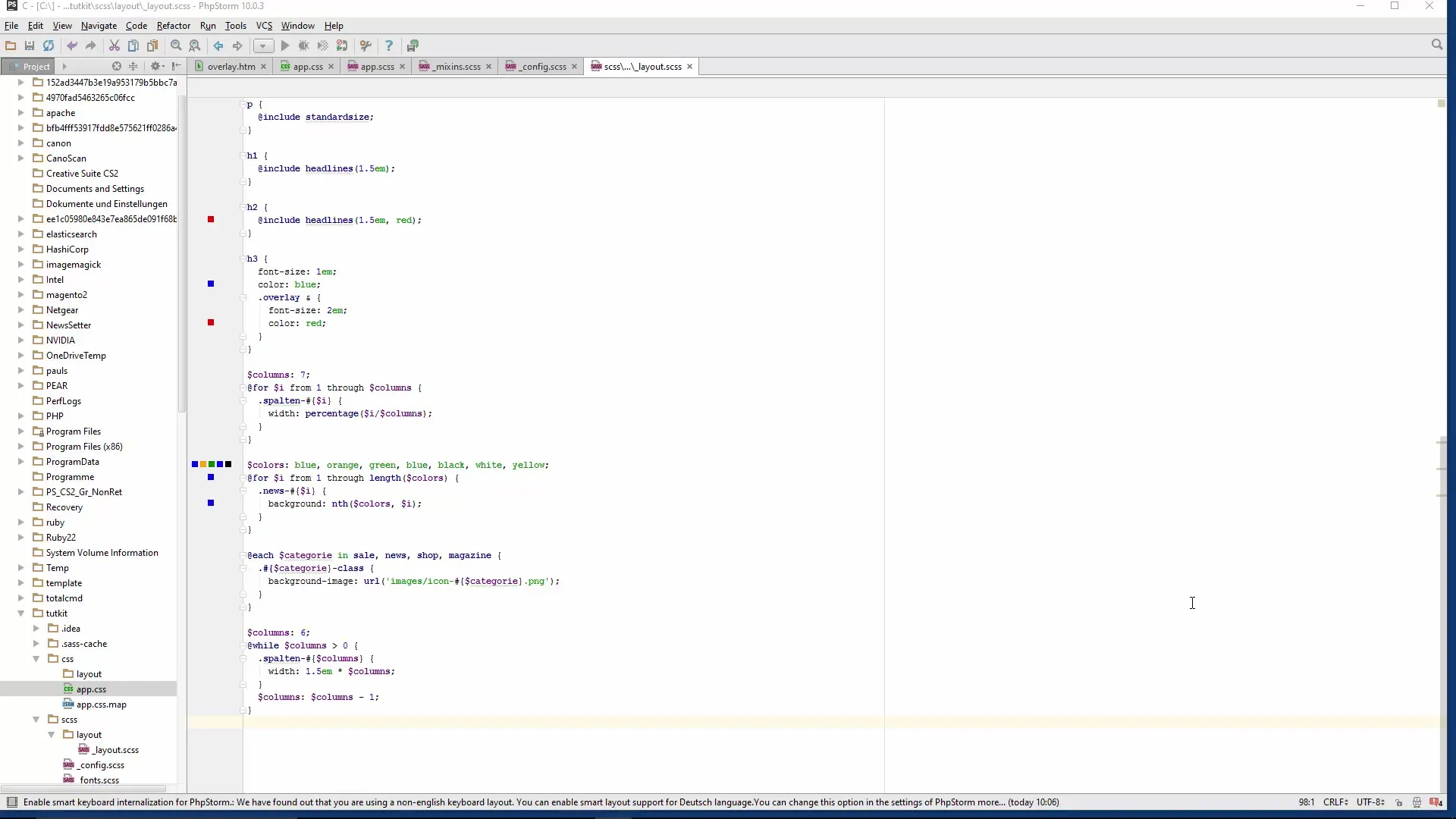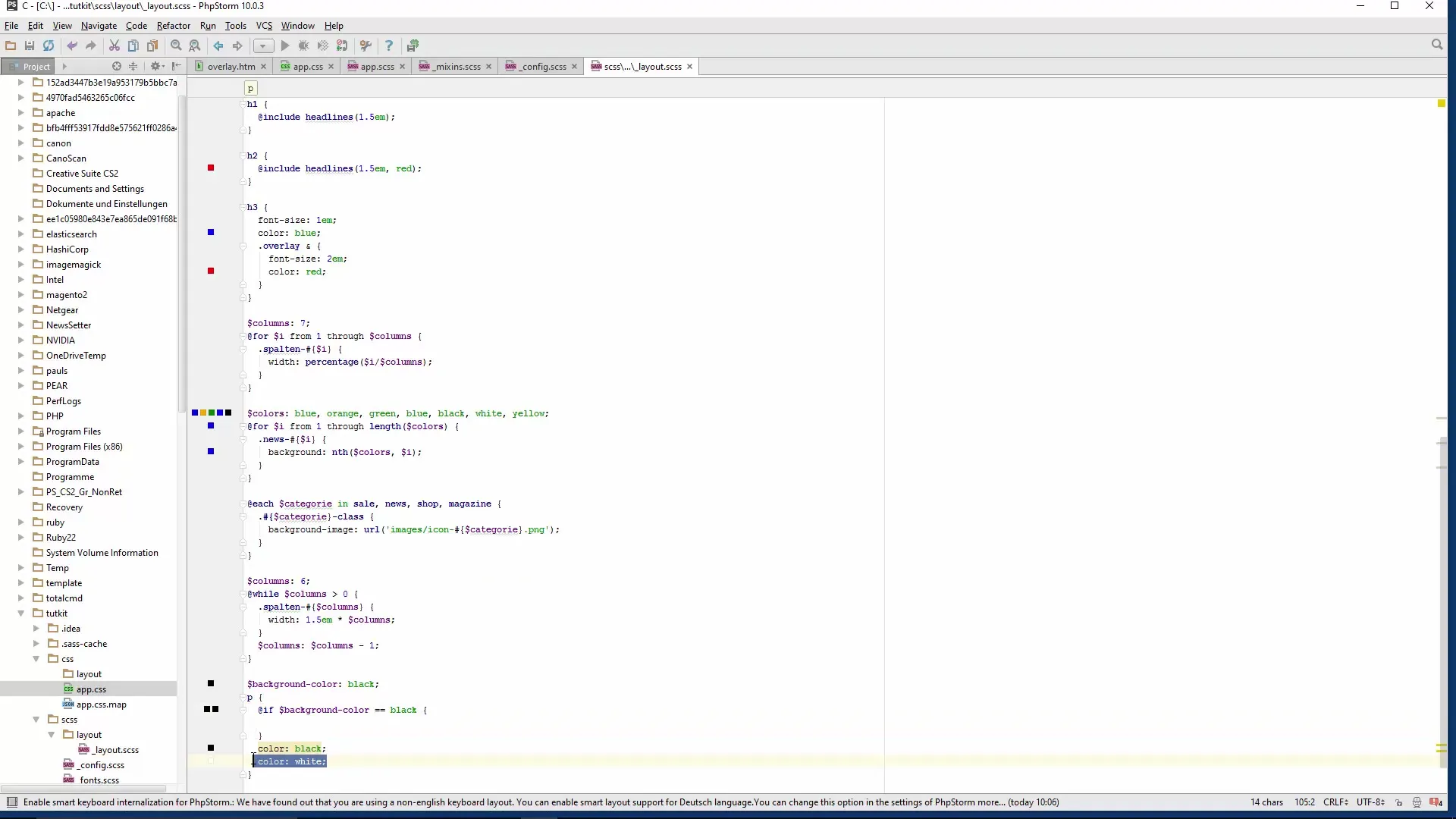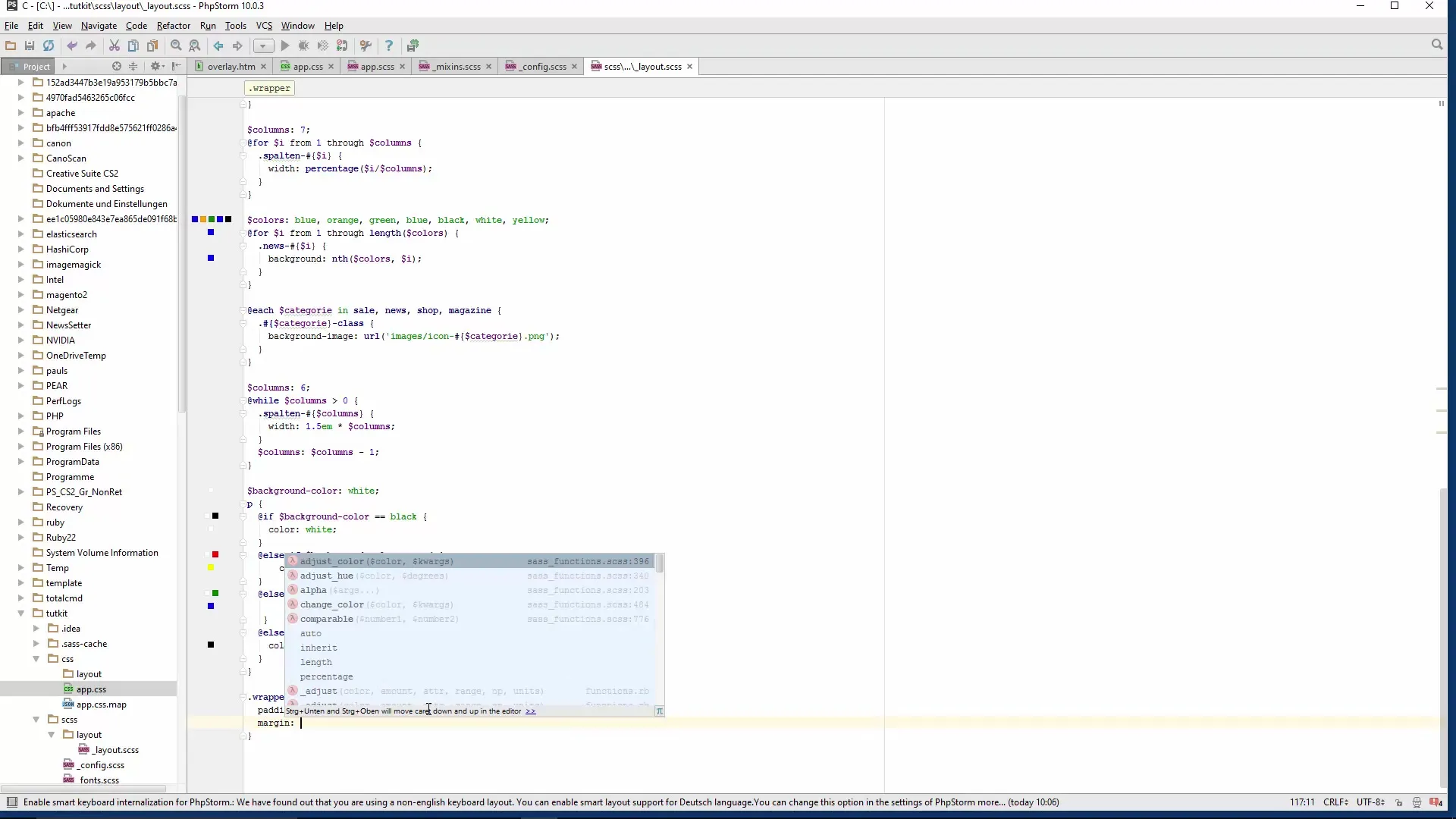CSS is an essential tool for every web developer. Using Sass extends the possibilities of CSS by allowing you to define conditions that make the design of your website more dynamic. In this guide, you will learn how to work with if and else conditions in Sass to flexibly adjust your stylesheets and create different designs based on background color.
Key Insights With Sass, you can react more effectively to different situations by using conditions in stylesheets. Creating variables and using if, else if, and else allows you to dynamically adjust CSS styles based on specific conditions.
Step-by-Step Guide
1. Setting a Background Color
Let's start by defining the Background Color of a webpage. You can create a variable for the background color that will later be used to dynamically adjust the text color. First, define the variable.

In the example, we create a variable for the background color. For instance, if the background color is black, the text color and font need to be set to a contrasting color to ensure good readability.
2. Responding to Conditions
Now we come to applying the conditions. You can use if conditions to determine which background color is being used and change the text color accordingly.

Here we set the condition that if the background color is black, the text color will be set to white. Otherwise, the text color will be displayed as black if the background is white.
3. Adding Additional Conditions
To further expand your CSS rules, you can add more cases with else if. This allows you to check for more than just two colors.
Let's say we want to additionally respond to a red and a green background color. Here you will define the else if conditions for each of these colors and specify a corresponding text color for each.
4. Querying Multiple Colors
To be more specific, it is possible to query multiple specific colors. You can expand your conditions so that different colors have an impact on the text display.
Here you check whether the background color is red, green, black, or white. Depending on the return value, the text color is set accordingly. For all undefined colors, you can specify a default color.
5. Dynamically Adjusting CSS Properties
Now that you know the basic conditions, you can dynamically change actual CSS properties. This is especially useful when you want to test different layouts.

Let's say you want to experiment with whether a layout should be full-width or not. Here, you use another if statement to adjust properties like margin and width accordingly.
6. Using Variables for Flexible Layouts
You can also define variables to test different layouts by defining a Boolean variable that you then use in your conditions.
In this example, we set a variable layoutTest, which returns different layout properties depending on the value. This gives you the flexibility to change your styles under different conditions without having to write a lot of repetitive code.
Summary - Modern CSS with Sass: Efficiently Use Conditions with if and else
In this tutorial, you learned how to use conditions in Sass using if, else if, and else. By creating variables and defining dynamic styles, you can design your website more effectively. The ability to respond to different value states opens up many possibilities in your CSS development.
Frequently Asked Questions
How do I define a variable in Sass?You can define a variable in Sass with the $ symbol, e.g., $background-color: black;.
Can I use multiple conditions at the same time?Yes, you can use if, else if, and else to define multiple conditions.
How can I test layouts with conditions?With Sass, you can easily set variables to dynamically change layout properties like padding and margin based on conditions.


